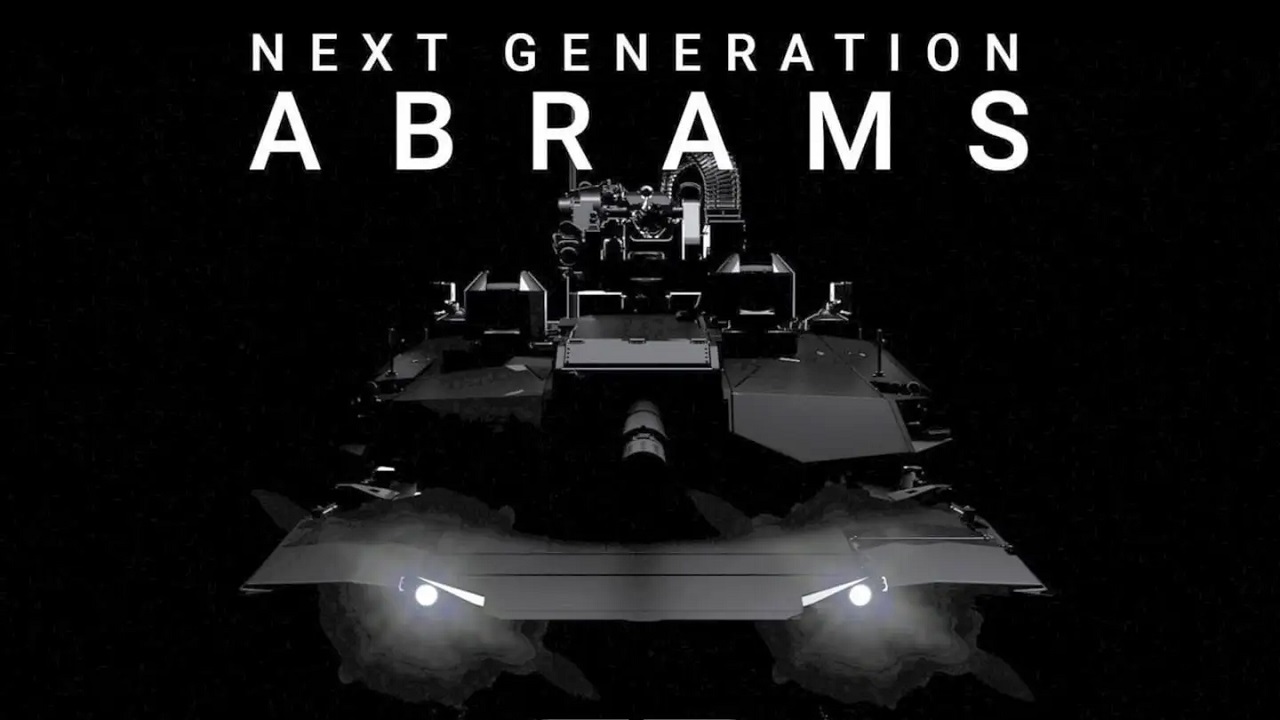AbramsX Is Coming: Ukraine is hoping that its incoming influx of Western-made main battle tanks (MBTs) will push its defensive efforts over the edge. The UK has agreed to send over Challengers, Germany will deliver Leopards, and the U.S. is set to ship its Abrams armored vehicle.
For nearly four decades, the Abrams family of tanks has honorably served America’s armored corps. While the Abrams MBTs have stood the test of time in terms of reliability and power, its manufacturer General Dynamics Land Systems is gearing up to release its next-generation family variant- the AbramsX.
A History of the Abrams Tanks
Named to honor the Vietnam-era General Creighton Abrams, the M1 Abrams American battle tank has remained a mainstay in the U.S. armored corps since its inception in the late 1970s. Chrysler Defense (currently General Dynamics Land Systems) designed the MBT to supersede the Soviet Union’s T-62 tank. At the time, the MBT-70 program was collaborative and aimed to create an MBT that could replace both the aging M60 Patton and West Germany’s Leopard 1 armored vehicles.
The program was ultimately nixed but the Abrams family was derived from its efforts. A little more than 3,000 M1 Abrams were produced by 1985, and all were fitted with the license-built M68A1 version of the 105mm Royal Ordnance L7 gun. Additionally, the tank featured Chobham armor, making the Abrams the first MBT to sport this advanced armor.
As they were produced, the M1 Abrams tanks operated alongside the Patton within the U.S. armored corps, as well as with other North Atlantic Treaty Organization (NATO) tanks in Cold War exercises. While the tank was a step up from the Patton, some glaring flaws did exist. The Project on Government Oversight issued a report in 1990 critiquing the Abrams’ high cost and low fuel efficiency compared with its near-peer MBTs. To rectify these issues, the Abrams underwent a minor facelift. Over the years, several new Abrams variants were designed to keep the MBT as updated and sophisticated as possible.
The AbramsX: Specs and Capabilities
In the fall, General Dynamics Land Systems officially revealed its latest Abrams family iteration – the AbramsX. In the released video, the new MBT appears very futuristic, sporting a highly revised turret equipped with electro-optical sights and a remote weapons station. Perhaps the most significant improvement the AbramsX possesses is its fuel-saving turbine engine, which reportedly will result in a 50 percent fuel savings rate, according to The Drive. The hybrid electric drive that the new Abrams will feature is capable of enhancing fuel efficiency while also ensuring greater crew survivability with lower thermal and acoustic signatures. Essentially, the tank’s operators can fire weapons and use sensors without giving off easily detectable signatures.
Additional advancements include the KATALYST Next Generation Electronic Architecture (NEGA), which will “connect all its systems together and provide for ease of upgradability of its hardware and modification of its software so that the tank can age more gracefully than its forebearers and can be adapted more quickly to accommodate changing tactical realities and technologies.”
The AbramsX will have a smaller frame than its predecessor, making the tank more mobile than its larger counterparts. While the new variant may be tinier than enemy tanks, the AbramsX will still pack a punch weapons-wise, featuring a Konsberg RS6 remote-controlled weapon station consisting of a 7.62 coaxial machine gun and XM914 30 mm cannon.
The revival of tank warfare in Ukraine has reignited the need for an advanced MBT. Although the Abrams is nearing close to 45 years in service, it looks like the formidable family of tanks isn’t going anywhere.
Maya Carlin, a Senior Editor for 19FortyFive, is an analyst with the Center for Security Policy and a former Anna Sobol Levy Fellow at IDC Herzliya in Israel. She has by-lines in many publications, including The National Interest, Jerusalem Post, and Times of Israel. You can follow her on Twitter: @MayaCarlin.
From 19FortyFive
A Russian Submarine Accidently ‘Destroyed Itself’
Total Massacre’: Ukraine Footage Shows Russian Cruise Missile Shipment Attacked

